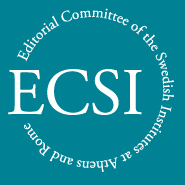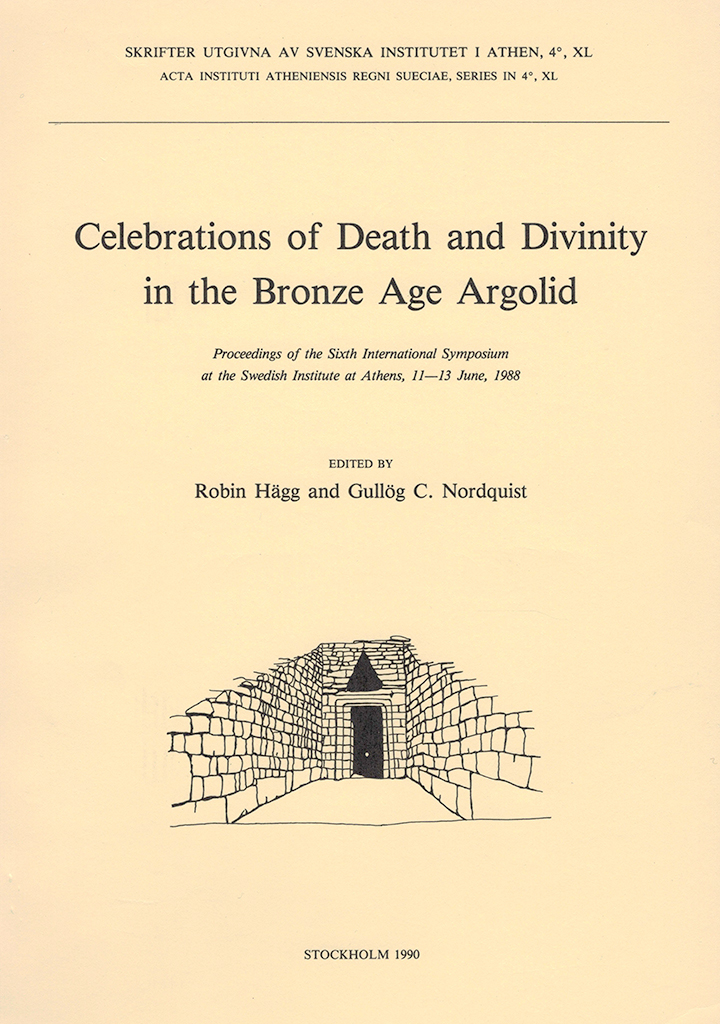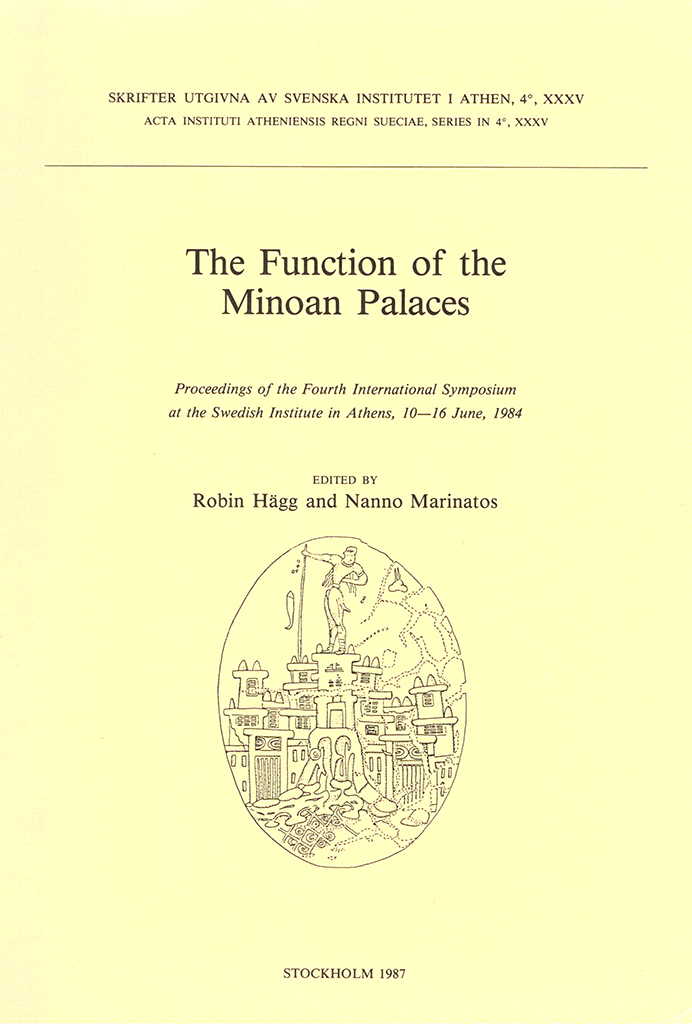Distributed by Astrom Editions. Celebrations of death and divinity in the Bronze Age Argolid. Proceedings of the Sixth International Symposium at the Swedish Institute at Athens, 11–13 June, 1988 By Robin Hägg & Gullög C. Nordquist (eds.) Twenty-four papers on various aspects of burial customs and religious cult practice in the region Argolis (Greece) during the Bronze Age, read at an international conference in Athens; the papers are followed by transcripts of the discussions of the symposium. The papers are arranged in six groups, discussing (1) ceremonial practices in the Early and Middle Helladic periods, (2) mortuary customs, state formation and Mycenaean society, (3) burial rites in tumuli, tholoi and chamber tombs, (4) symbols and symbolism in Mycenaean celebrations, (5) Mycenaean cults and cult practices, and (6) religious aspects of the post-Bronze-Age period. Contents Preface (p. 7) Ceremonial practices in the Early and Middle Helladic periods Daniel J. Pullen | Early Helladic burials at Asine and Early Bronze Age mortuary practices (pp. 9–12) Miriam Caskey | Thoughts on Early Bronze Age hearths (pp. 13–21) Carol Zerner | Ceramics and ceremony: Pottery and burials from Lerna in the Middle and early Late Bronze Ages (pp. 23–34) Gullög C. Nordquist | Middle…
View record at WorldCat. The function of the Minoan palaces. Proceedings of the Fourth International Symposium at the Swedish Institute in Athens, 10–16 June, 1984 Edited by Robin Hägg & Nanno Marinatos Fourty-seven papers on the functions of the palace, the most characteristic phenomenon of the Minoan Bronze Age civilization in Crete, read at an international conference in Athens; the papers are followed by transcripts of the discussion of the symposium. The papers are arranged in eight groups, discussing (1) background (Near Eastern and Egyptian economy), parallels (Mycenaean palaces) and methodology; (2) the emergence of the Cretan palaces; (3) the relations of the palace with town and territory; (4) recent archaeological finds; (5) the palaces as ceremonial and religious centres; (6) the palaces as centres of trade and manufacture; (7) the administrative systems of the Minoans and Mycenaeans; and (8) the function of the frescoes in the palace. For James Walter Graham and to the memory of Spyridon Marinatos. Contents Preface (p. 9) Background and methodology Benjamin R. Foster | The Late Bronze Age palace economy: A view from the East (pp. 11–16) Wolfgang Helck | The dissolution of the palace economy in the Ramesside period (pp. 17–19) Klaus Kilian…


